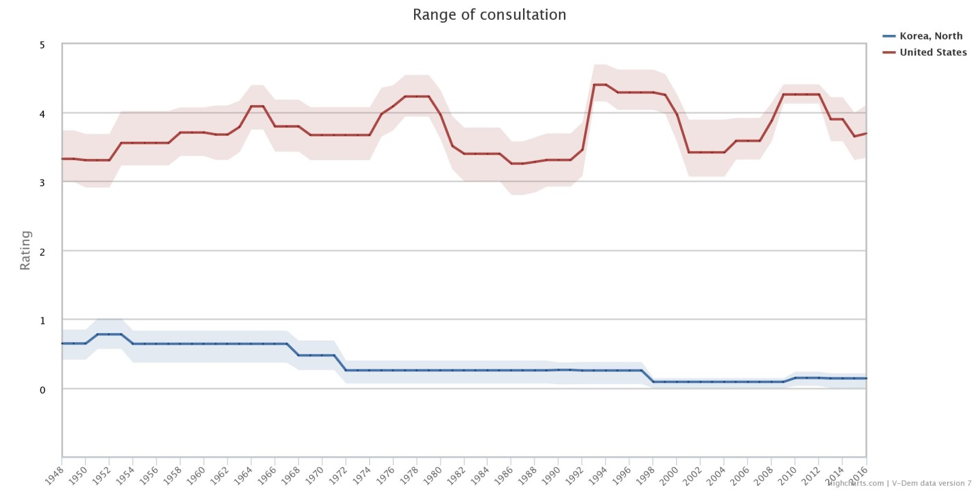North Korea and leaders’ decision power
By: V-Dem Staff
Dec 07, 2017
During the past months, North Korean leader Kim Jong-un has intensified his threats to attack US territory. Contrary to his stylization as a strongman, some analysts believe that this might be a sign of Kim’s weak domestic position. However, information is scarce due to the country’s repressive environment. Nevertheless, thanks to a set of renowned Country Experts V-Dem can provide data on North Korea, too.
This week’s graph looks at how much effective decision-making power is vested in the “Supreme Leader”, and compares him to his main antagonist, the President of the United States. V-Dem’s range of consultation indicator refers to the range of elite actors which are involved when it comes to important policy changes. Starting from zero, which signifies no consultation at all, the width of actors increases with every step on the five point scale.
The graph speaks a clear language; policy decisions in North Korea are virtually due to the leader’s choice. Not only has this been cemented by Kim Il-sung’s rule (1948-1994) and under his successor Kim Jong-il (1994-2011). There are also no clear signs that Kim Jong-un has lost control since he came into power in 2011. On the contrary, his grip on the state is firmer than it was in most of the country’s history. Although somewhat fluctuating in time, the data for the US make clear that different from King Jon-un, even a US President like Donald Trump is far from omnipotent.
If you want to learn more about facets of North Korean’s regime, use our online analysis tools at v-dem.net.


